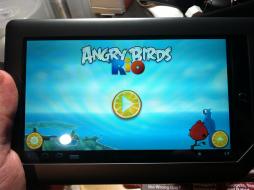Adapted from Executive Summary: With the aim of providing developing member countries (DMCs) with better guidance to use information and communication technology (ICT) effectively in education, the Asian
Development Bank (ADB) funded a 21-month regional technical assistance (RETA) in Bangladesh, Nepal, Mongolia, and Samoa. The RETA researched approaches to using ICT in education in ways that succeed in improving teaching and learning and also are sustainable given the region’s development challenges.
The study in Bangladesh, part of the e-Teacher Training component, complements the existing ADB-funded Teaching Quality Improvement in Secondary Education Project (TQI-SEP;2005–2011), which has as one of its objectives, to provide in-service professional development to all serving teachers working in secondary schools recognized by the Ministry of Education (MoE) at least once during the project period.
The study equipped two subject trainers, a training coordinator, and a cluster of 10 schools with “smartphones”2 (with video, speakerphone, and three-way calling capabilities), for use by 20 Bangla and math teachers in 10 schools of the Barisal region in southern Bangladesh. The existing training curriculum was revised from a 2-week, face-to-face workshop to a 6-week distance-mode training based on printed materials and practical application of training content with peers. The phones were intended primarily to enhance communication, motivation, and multimedia delivery.
The objective of the study was to develop a case study on the use of mobile connectivity in support of distance education and to determine whether:
• it is an effective mode for teacher training and improvement in classroom practice
• it is a suitable mode to reach rural and remote teachers, including women and disadvantaged groups
• it presents other benefits in terms of education administration (including student assessment and costs) and pedagogy.
The study also sought to determine the costs of this model, and the features of the smartphones that would be most useful as a support to distance learning.

